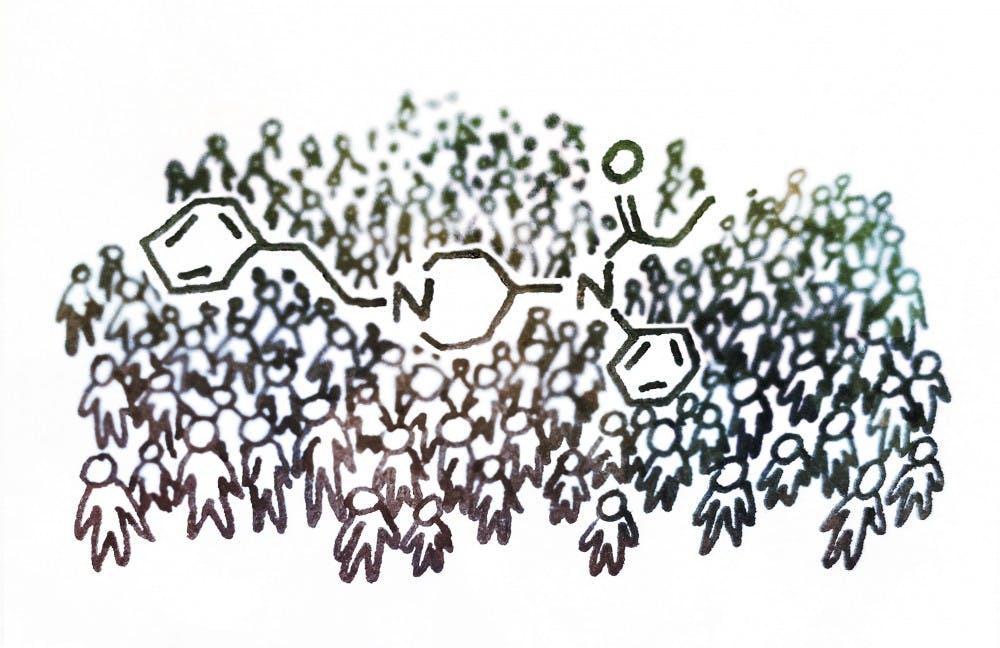The speculation surrounding Tom Petty’s sudden death in October finally simmered earlier this month with the release of his cause of death. He died from an overdose on pain medication — what was found to be a lethal concoction of fentanyl, oxycodone, and alprazolam. Petty was 65 and certainly not young, but his death still rang untimely considering he and the Heartbreakers had concluded their latest tour just a week earlier.
Petty’s death was eerily reminiscent of another rocker’s a year before. In April of 2016, Prince passed away in his Minnesota studio-home from an overdose on prescription painkillers. Like Petty, Prince was a rock icon in his own right, and he continued to release new music and go on tour right up until his death. And like Petty, his death was a shock to most of us who expect our favorite musicians to live forever. It felt unfair that someone as larger-than-life as Prince could succumb to a mere miscalculation, and then Petty, Prince’s peer of similar stature, did the exact same thing soon after.
Both Prince and Petty had fentanyl in their systems when they died, an extremely potent opioid prescribed to patients with severe pain. In 2015, the painkiller and its analogs surpassed other drugs as the leading cause of drug overdoses in the United States. Heroin is often cut with fentanyl, since the latter drug can provide a similar feeling as the former at a much lower cost, rendering the already hazardous street drug all the more deadly.
A Senate report released last week found that Chinese laboratories have been relentlessly exploiting the United States Postal Service to sell fentanyl, mailing over $766 million worth of the drug to the states over the past year. Captained by Senators Rob Portman (R-OH) and Tom Carper (D-DE), the report detailed the role online markets play in the spread of the drug in the U.S. and several recommendations meant to improve the Postal Service’s lackluster efforts in stopping those transactions. While Petty’s family insisted he was prescribed fentanyl patches, investigators believe the fentanyl involved in Prince’s overdose was mislabeled as hydrocodone.
The fragility of the opioid addictions that presumably gripped the two musicians warrants troubling questions about their lives and those of the average American. Prince was one of over 40,000 in the U.S. who died of an opioid overdose in 2016; the same figures for last year are expected to be higher as the epidemic continues.
Why are so many Americans willing to flirt so intimately with death for a temporary fix?
Some of the answers are found in studies of “deaths of despair,” of which the opioid crisis is surely a symptom. First coined last year by Princeton researchers Anne Case and Angus Deaton, the term refers to overdose, suicide, and alcohol-related deaths the two claim are instigated by deteriorating social and economic wellbeing. Case and Deaton say deaths from substance abuse are disproportionately affecting working class whites, to the extent that they are trimming years off the life expectancies of the demographic group.
The two describe the phenomenon as “an accumulation of pain, distress and social dysfunction in the lives of working class whites that took hold as the blue-collar economic heyday of the early 1970s ended, and continued through the 2008 financial crisis and the subsequent slow recovery.”
Coinciding with this trend was a precarious change in American doctors’ approach to pain management. Following the Joint Commission’s declaration of pain as the fifth vital sign in 2001, doctors were encouraged to treat pain more quickly with painkillers despite knowing full well their addictive potential.




